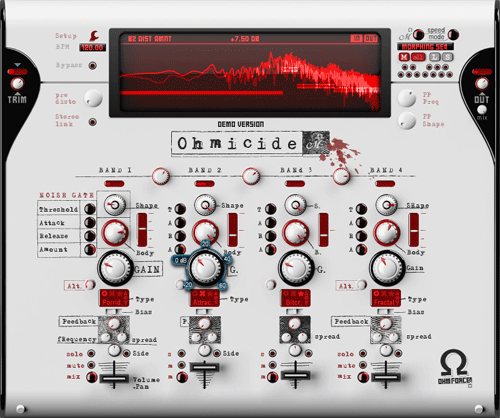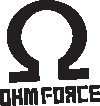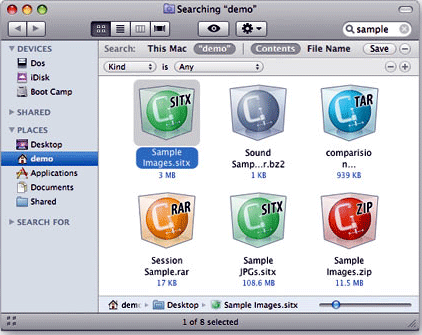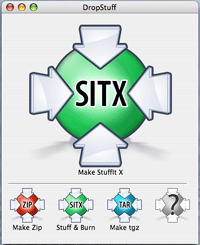Pro Tools, AVID/Digidesign’s benchmark digital recording software, is synonymous with the production of hit records. Since its introduction into the professional recording industry in the mid 90’s, Pro Tools has remained a frontrunner for audio production. When Pro Tools was introduced in 1991, four channels of audio were available at a price tag of $6000. Thankfully for us, Pro Tools’ capabilities continued to grow alongside the steady advancements of computer technology. As the audio industry began to stray away from major recording facilities, into home studios and bedrooms, Digidesign began developing Pro Tools systems that catered to all levels of audio production. Today, Digidesign offers Pro Tools systems affordable on nearly any budget. In this article, we take an in depth look at three levels of Pro Tools studio systems: The M-Box studio ($250-$1000), The 003 studio ($1200-$2,500), and the HD studio ($10,000+). We will also discuss some important add -on’s that can be a great addition to any Pro Tools System. These include, system upgrades, a master clock source, converters, and control surfaces. First, let’s check out the hype behind the Pro Tools software and the advancements in Digidesign’s latest version, Pro Tools 8.
Introduction To Pro Tools
Pro Tools is a Digital Audio Workstation (DAW). A DAW is comprised of two elements, audio recording software and audio conversion hardware. The software allows for recording, editing, mixing, and midi arrangement. The hardware provides analog to digital and digital to analog conversion of the audio. Pro Tools LE software requires a Digidesign hardware interface in order to operate. Pro Tools HD utilizes Digidesign PCI cards for processing and uses a separate hardware device for conversion.
The Pro Tools workspace is comprised of two main windows. Mix and edit. The mix window contains a vertical channel strip for each track in the session. It is set up much like a typical mixing console. Each channel has inserts, busses, input/output selections, a pan pot, record enable, solo, mute, and a fader. The edit window contains the same options as well as waveforms for each track in the session. The edit window allows you to view the waveforms for each track, edit and arrange the audio, as well as set up markers, and control the transport (play, stop, rec, etc). The editing workflow is one of the most impressive aspects of the software. There are several tools and editing modes that make editing and arranging a breeze. Pro Tools offers a number of playback and record options as well. These include: loop playback, punch record, and loop record. The software also provides comprehensive midi and video capabilities.
In the latest version of the software, Pro Tools 8, Digidesign maintained their user-friendly workflow that helped to make the software an industry standard. There are several new features such as elastic audio, the off spring of the popular audio quantization application, Beat Detective. They have also added more tracks for LE systems (48 mono or stereo), several virtual instruments and plug-ins, and a hip, new design for the workspace. Now, lets take a look at the options for Pro Tools studio set-ups.
Mbox Series ($250-$700)
The Pro Tools Mbox series hardware is a great option for those who are looking for a simple, portable device for recording. The price for these interfaces range from $250 to $700 and includes the latest Pro Tools Software. The latest Mbox hardware consists of the Mbox 2 micro, Mbox 2 Mini, Mbox 2, and Mbox 2 Pro.
The Mbox 2 Micro is a 24bit/48k, output only USB device that is about the size of a jump drive. It was designed for engineers who want the ability to work on sessions anywhere. There are no inputs on the device. It is equipped with a 1/8″ jack for monitoring.
The Mbox 2 Mini is 24bit/48k, 2 channel USB interface. It is a great option for new Pro Tools users or songwriters who want a simple device for basic recording applications. The Mbox 2 Mini is equipped with one XLR input with 48v phantom power, two 1/4″ inputs, two 1/4″ outputs, a headphone output, and combined volume control. There are a few downsides of the Mini. It does not include a midi I/O or separate volume controls for monitor and headphone outputs.
The Mbox 2 is a 24bit/48k, 4in/2out USB interface. It offers a few more features than the mini. It is a good choice for someone looking for a basic interface that includes midi capability and more extensive input options. The Mbox 2 features two preamps with 48v phantom power, two analog inputs (XLR or 1/4″), two digital SPIDIF inputs, two 1/4″ outputs, midi I/O, a headphone output and separate volume controls for monitors and headphones.
The final piece in the Mbox series is the Mbox 2 Pro. It is a 24bit/96k, 6in/8out fire wire interface. The Mbox 2 Pro is a great buy for beginners looking to get into more advanced sessions and professionals who need a reliable device for remote recording. It offers two preamps with 48v phantom power, four analog inputs (XLR or 1/4″), two digital SPDIF inputs, six 1/4″ outputs, midi I/O, two headphone outputs, and separate volume controls for monitors and headphones.
The M Box series hardware is a solid option for mixing on the run, portable recording, and basic demo sessions. However, if you are looking for a more advanced device with the ability to handle larger sessions, the Digidesign 003 could be what you are you are looking for.
Digidesign 003 Series ($1200-$2500)
The Digidesign 003 is 24bit/96k, 16 channel Pro Tools interface. It can be found in countless project studios, as well as the B rooms of several major facilities. It is an effective workhorse, offering a wide range of amenities for those not ready to take the leap to HD. The 003 interfaces range from $1200-$2500.
The 003 provides four pre amps with 48v phantom power, 4 XLR inputs, 4 1/4″ inputs, 8 1/4″ outputs, 2 1/4 monitor outputs, 8 channels of adat I/O, word Clock I/O, midi I/O, two headphone outputs, and separate volume controls for headphones and monitors. The 003 also includes 8 motorized faders, led/lcd displays, solo, mute, record enable, and pan knobs for each channel. It offers a transport, a jog wheel, and insert/send assignment as well. The 003 is also available in a rack mount version. The 003 rack has the same capabilities as the 003, but the control surface is excluded. Before we get into Pro Tools HD, there a few add-ons for Pro Tools LE systems that are worth considering.
Pro Tools LE Upgrades
Digidesign’s Pro Tools LE software is stocked with many great plug-ins. But, as we all know, you can never have enough options. So Digidesign developed a couple upgrades that offer a comprehensive bundle of additional options for Pro Tools LE users.
The Music Production Tool Kit offers an upgrade to 64 tracks of audio, multichannel beat detective, and a killer plug in selection. The plug-ins include TL Space (convolution reverb), Smack (compressor/limiter), Eleven (guitar amp emulator), and a few more great tools.
Digidesign also offers an upgrade package for Pro Tools users who utilize the software for video production. The DV Toolkit offers an upgrade to 64 tracks of audio, Digibase (file management tool), Digitranslator (OMF, AAF, and MXF conversion), and Time Code/ Feet and Frames capability. The upgrade also includes a number of plug-ins, including: DINR (noise reduction), TL Space, and X-Form (TCE and pitch shifter).
Adding a set of high-end audio converters is one of the most effective ways to instantly improve the sonic clarity of your Pro Tools LE Studio, if you utilize outboard recording gear or digital audio devices. The sonic clarity of an external clock source and high-end audio conversion can drastically help take your Pro Tools LE studio to the next level. If this is something you are considering, I suggest trying out a few options to see what sound appeals to you. Some high-end clocks and converters include Apogee, Antelope, Lynx, and Prism.
Pro Tools HD Studio ($10,000 +)
The final option for a Pro Tools studio is Pro Tools HD. Pro Tools HD systems are catered toward the professional audio and video industry. It has become a near necessity for every commercial recording studio to house a Pro Tools HD system. HD set-ups start at around $10,000.
As we outlined earlier, Pro Tools HD hardware operates a bit differently than LE. The processing and audio conversion is integrated into a single interface for LE systems. HD systems utilize Digital Signal Processing cards (DSP) and digital converters. The DSP cards are installed in the PCI slots of the computer. These cards are connected to audio converters via a Digilink cable. There are two steps to purchasing a Pro Tools HD system: Selecting a core system and choosing your interface/s
There are three Pro Tools HD Core systems: Pro Tools HD 1, Pro Tools HD 2 Accel, and Pro Tools HD 3 Accel. The Pro Tools HD 1 system includes one HD Core card. The HD 1 system will support 32 channels of A/D and D/A conversion and up to 96 digital audio tracks.
The Pro Tools HD 2 system offers one HD Core card and one HD Accel card. A HD 2 system is capable of handling 64 channels of conversion and up to 192 digital audio tracks.
The Pro Tools HD 3 system is comprised of one HD Core card and two HD Accel cards. HD 3 systems support 96 channels of conversion and 192 digital audio tracks.
Each of these systems can be upgraded by adding additional cards. If you run out of PCI slots you can connect and expansion chassis to house the extra cards. Once you have your HD Core System, you will need to add a Pro Tools HD I/O interface or third party converter in order to route audio to and from the HD DSP cards.
Digidesign has a number of options for Pro Tools HD interfaces. Lets take a look at the two of their more favored interfaces. The Digidesign 96 I/O is a 16 channel, 24bit/96k audio interface. The 96 I/O offers 8 channels of analog I/O (TRS) and 8 channels of optical I/O (ADAT). It also includes an expansion feature, which allows you to connect multiple interfaces together. The 96 I/O is a good option for HD users who are looking for a basic, overdub/mix set up. If you need more than 8 channels of analog I/O or plan to expand your system in the future, you may want to consider the 192 I/O.
The Digidesign 192 I/O is 16 channel, 24bit/192k audio interface. The 192 I/O has 8 channels of AES/EBU I/O, 8 channels of TDIF I/O, and 16 channels of ADAT I/O. There are a number of expansion card options for the 192 I/O. The AD and DA expansion cards give the 192 I/O the ability to support up to 16 channels of analog I/O. The digital expansion card adds an additional 8 channels of AES/EBU, TDIF and ADAT I/O. The 192 I/O also includes an expansion feature, which allows you to connect multiple interfaces together.
Pro Tools HD systems also support third party I/O interfaces. As we discussed earlier, there are many high-end options for third party converters. Each brand offers its own unique “color” to the audio. I would recommend listening to the different options in order to decide which converters are right for you.
Pro Tools HD Upgrades
A control surface is a great addition to a Pro Tools HD System. Control surfaces are digital mixing boards that provide hands on control of your session. They are set up like an analog mixing board and allow for recording, mixing, and editing functions. Digidesign offers a number of excellent control surfaces, including: C24, D Command, and Icon.
Whether you are just delving into the world of recording or are a seasoned professional, there are many great options for putting together an exceptional Pro Tools recording studio. If you are interested in learning more about Pro Tools, visit www.avid.com. They have documentation, reviews, and videos that offer excellent advice on choosing the right system for your needs and budget.
I hope this article provided you with the information you need to choose the right Pro Tools system for your application . We would love to hear your questions, comments, and feedback! If we can be of any assistance, feel free to drop us a line!
Giovanni-
therecordshop1 (@) gmail.com





